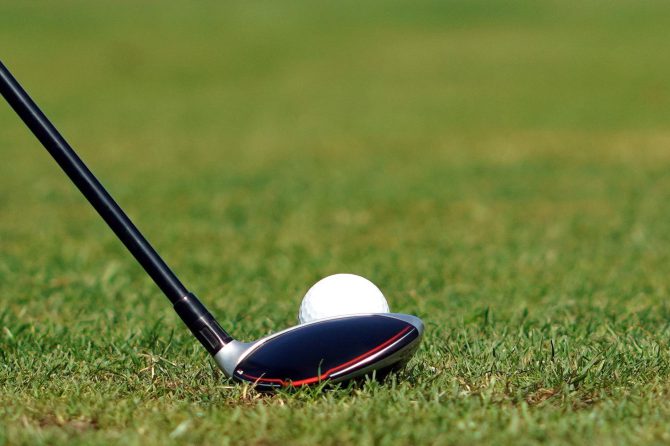Exploring the Biomechanics of Dustin Johnson’s Golf Swing
Dustin Johnson stands out in the world of professional golf, not just for his remarkable list of achievements but also for his remarkable swing mechanics that seamlessly combine power and precision. As one of the longest hitters on the PGA tour, his technique showcases a complex interplay of biomechanical principles essential for effective performance on the course. This article delves into the intricate details of Johnson’s swing from a biomechanical outlook, focusing on physical attributes, movement patterns, and stability that contribute to his success.
The Biomechanics Behind Dustin Johnson’s Swing
Johnson’s golf swing exemplifies optimal biomechanics in action, highlighting a perfect blend of strength, flexibility, and coordination. Central to his mechanics is the kinetic chain—a sequential activation process involving various body segments that maximizes clubhead speed and power. Key components include:
- Lower Body Activation: He skillfully engages his lower body to kickstart the downswing by loading up his hips and legs for a robust foundation.
- Core Stability: A strong core facilitates efficient energy transfer from lower to upper body before reaching the club.
- Upper Body Rotation: The rotation in Johnson’s thoracic region is vital for achieving necessary arm elevation during swings.
The angles at which joints operate are crucial during transitions between backswing and downswing phases. His ability to maintain optimal joint angles enhances both fluidity and accuracy throughout each swing phase.Important joint considerations include:
- Ankle and Knee Flexion: These angles support stable setups while allowing dynamic movements throughout swings.
- Hip Rotation: Controlled hip rotation aids balance while generating speed effectively.
- wrist Positioning: Proper wrist alignment builds tension during swings while ensuring precise release upon impact.
Muscled Coordination: Power Generation in Action
The muscle activation patterns within Johnson’s swing clarify how technique translates into performance efficiency. Through advanced video analysis techniques like motion capture technology, it has been observed that specific muscle groups activate at critical moments—promoting an effective energy flow throughout each phase.Notable muscle actions include:
- Pivotal Glutes & Hamstrings Engagements:This group plays a key role during transitions by maintaining balance while delivering power.
- Cores muscles Activation: A well-engaged core stabilizes posture while facilitating weight transfer across different phases of swinging motions.
- <StrongForearm Muscle Dynamics: The swift engagement here ensures solid grip control as he moves into follow-throughs effectively.
Synchronized Joint Movements During Swings
A detailed examination reveals sophisticated interjoint coordination between upper and lower bodies within Dustin’s golf swing dynamics—showcasing synchronized actions among shoulder joints through elbow down to wrist movements alongside hip rotations downwards towards knees working together harmoniously producing an effective kinetic chain reaction! The sequence initiates from ground level upwards where contributions made by lower limbs generate significant force leading smoothly into backswing characterized distinctly via pelvic rotations enhancing overall mechanical efficiency!
| Swing Phase | Joint Movements | Key Actions |
|---|---|---|
| Backswing | Hip & Trunk Rotations | Power Coiling |
| Transition ; | Lower Body Stabilization | Energy Transfer |
Muscle Activation Patterns Contributing To Power Generation
In Dustin’s Golf Swing
The coordinated muscle activations play an essential role generating remarkable powers characterizing performances centralizing around sequential activations multiple groups along kinetic chains initially engaging core muscles including oblique transverse abdominis stabilizing pelvis maximizing rotational movements upper bodies maintaining postures balances setting stages effective transfers downswing.
As he transitions downward notable activations occur particularly glutes quadriceps hamstrings relying heavily explosive strengths legs initiating movements with gluteus maximus pivotal extending hips rapidly retracting coupled flexions knees creating powerful upward thrust propelling torso arms forward synchronizations allow achieving remarkable speeds vital distances.
Upper-body muscles such as deltoids pectorals forearm flexors further contribute explosiveness impacts phases optimal coordinations timings crucial external rotations lead arms wrist flexions enhance controls impacts powers intricate dances lead highly efficient patterns characterized speeds precisions understanding these sheds light techniques informs instructions golfers seeking improvements performances.
The Role Of Posture and Alignment In Consistency
Understanding significance body postures alignments crucial achieving consistent performances golfing swings exemplified synergy execution laying foundations promoting stability balances motions adopting neutral stances positioning weights evenly across feet essential maintaining controls setups engaging cores effectively providing solid bases initiating powers generation downsides.
Moreover alignments play pivotal roles abilities consistently produce signature fades establishing slightly open relative target lines ensuring paths conducive drawing balls left-right strategic positions influence angle impacts facilitating trajectories maximizing distances accuracies practicing such can enhance capacities reproduce ideal shapes leading improved overall performances!
Importance extends beyond mere alignments encompassing angles joint flexion engagements to allowing optimal shoulder hip rotations backsides slight bends knees neutral spine angles paramount focusing creates repeatable mechanisms heightening consistencies minimizing risks injuries elements become second nature likely achieve best under pressures!
Implications For coaching Tailoring Techniques Enhance Performance
Understanding mechanics offers invaluable insights coaching levels dissecting unique techniques developing personalized training regimens enhancing players’ through deeper grasps biomechanical principles key areas focus can include:
Grip Technique analyzing specifics establish stable positions critical shots accuracies.
Postural Alignment evaluating influences guides golfers achieving optimally positioned generate controls.
Swing Tempo understanding balances teaches optimizing rhythms consistent performances.
Moreover coaching should emphasize individual adaptations cater physical attributes comfort personalizations foster closer alignments proven methods accommodating unique player mechanics instructors implement customized approaches including:
Video analysis recording highlights differences similarities providing visual aids advancements targeted drills developing reinforce observed tailored skill levels feedback loops establishing mechanisms allow continuous adjustments refinements golfer’s techniques.Considering insights incorporation frameworks allows holistic approaches development leveraging insights fostering habitats adaptive learning motivating embrace personal growth games coaches might consider factors:
| Technique Aspect Coaching Strategy Focus grip pressure hand positioning enhance control Posture encourage balanced stance create stable foundations Tempo drills establish consistent rhythms processes Conclusion: Unlocking Power and Precision: The Biomechanics Behind dustin Johnson’s Golf Masterymeta Title: Understanding the Biomechanics of Dustin Johnson’s Golf Swing Meta Description: explore the biomechanics behind Dustin Johnson’s powerful and precise golf swing.Discover techniques, strategies, and practical tips for mastering your own swing. The Fundamentals of Dustin Johnson’s Swingdustin Johnson’s golf swing is a masterpiece of biomechanics, characterized by its power, precision, and fluidity. Understanding the nuances of his swing can provide valuable insights for golfers looking too improve their game. Key Elements of Johnson’s Swing Mechanics
– Grip Type: Johnson uses a neutral grip which allows for greater control and clubface management throughout the swing. – Stance Width: His shoulder-width stance promotes stability and balance during the swing.
– Athletic Posture: A slight knee flex and a straight back set the foundation for an efficient swing. – Proper Alignment: Johnson’s alignment is crucial, ensuring that his body, shoulders, and clubface are directed towards the target. The Kinematics of the Swing
– Johnson’s backswing involves a smooth rotation of the shoulders while maintaining a stable lower body, allowing him to store energy effectively. – Core Engagement: During the backswing, his core muscles engage to maintain rotational stability.
– Weight Transfer: A shift of weight from the back foot to the front foot enhances power transfer through the swing. – Hip Rotation: His hips initiate the downswing, creating a powerful sequence of motions that culminate in a strong impact. Biomechanical Factors Contributing to Power and AccuracyJoint Angles and Segmental interactions
Muscle Activation Patterns
– Core Muscles: Essential for rotational stability and transferring energy. – Leg and Hip Muscles: Play a significant role in generating power and maintaining balance. Muscle Activation Summary| Muscle group | Function | |——————–|——————————————-| | Core | rotational stability and energy transfer | | Legs | Power generation and stability | | Shoulders | Club control and swing initiation | | Forearms | Grip strength and clubface management | Benefits of Understanding Biomechanics in GolfUnderstanding the biomechanics of the golf swing can lead to several benefits for amateur golfers and professionals alike:
Practical Tips for GolfersEnhancing Your Swing with Biomechanics
– Experiment with different grips to find one that enhances your control and comfort.
– Maintain an athletic posture to support your swing’s mechanics and improve balance.
– Incorporate drills that emphasize shifting weight smoothly from the back foot to the front during the downswing.
– Include strength training focused on core muscles to support rotational power.
- Improve your flexibility through stretching, as it allows for a fuller range of motion during the swing. Case Studies of Triumphant GolfersLearning from the ProsCase studies show that golfers who adopt biomechanical analysis tend to have notable successful transformations in their performances:
First-Hand Experience: A Golfer’s JourneyOne avid golfer, after studying Johnson’s techniques, implemented a biomechanical approach to his game. By focusing on proper weight transfer and core engagement, he saw a marked enhancement in both driving distance and accuracy, ultimately lowering his handicap significantly. ConclusionUnderstanding the biomechanics behind Dustin Johnson’s swing mechanics provides invaluable insights for golfers aspiring to enhance their performance. By focusing on grip, stance, weight transfer, and muscle engagement, players can unlock their potential, just as Johnson has mastered his craft. This article incorporates critical components of Dustin Johnson’s swing, highlighting the biomechanics essential for power and precision in golf. Utilizing this approach could lead to significant improvements and a deeper understanding of the intricacies of the game. You might be interested in …
Empirical Analysis of Billy Casper’s Golf Instructions: Technical and Mental Enhancements for Golf PerformanceEmpirical Analysis of Billy Casper’s Golf Instructions: Technical and Mental Enhancements for Golf Performance Billy Casper’s golf instructions exemplify a comprehensive approach to improving performance that encompasses both technical and mental strategies. Empirical analysis provides a rigorous evaluation of the effectiveness of Casper’s techniques. Technical aspects examined include grip, swing mechanics, and putting techniques, assessing the impact on consistency, accuracy, and power. Mental enhancements, such as visualization, breathing exercises, and focus strategies, are evaluated for their ability to reduce anxiety, improve concentration, and enhance problem-solving skills. The analysis demonstrates that Casper’s instructions, when applied systematically, can significantly enhance golf performance. Technical corrections improve ball striking and scoring, while mental strategies foster a positive psychological mindset and promote peak performance under pressure. 
This affordable launch monitor is now a better value than everEquipment Swap Deals Golfers seeking affordable equipment upgrades can take advantage of Titleist’s premium club discounts. Titleist has dropped prices for its TSR range, with drivers now at $549, and fairways and hybrids $50 off. The move could be a response to increased competition in the driver market following the release of TaylorMade’s Stealth 2 and Cobra’s AeroJet ranges. Despite positive feedback for Titleist’s TSRs, the discounts are designed to maintain competitiveness in the premium sector. Callaway’s Rogue ST drivers remain at full price. 
Golf Swing Mechanics: A Comprehensive Analysis from Vijay SinghGolf Swing Mechanics: A Comprehensive Analysis from Vijay Singh Vijay Singh, renowned for his exceptional swing, elucidates the intricacies of golf swing mechanics in this comprehensive analysis. He dissects the biomechanics of renowned swings, identifying key components that contribute to power, accuracy, and consistency. Singh’s insights delve into the dynamic relationship between body, club, and ball impact. He meticulously examines the role of the kinematic chain, sequencing, and body kinematics in maximizing swing effectiveness. Through an in-depth exploration of clubhead trajectory, path, and face angle, Singh unveils the critical factors that govern ball flight. This meticulous analysis provides invaluable guidance for both aspiring and experienced golfers seeking to refine their swing and achieve optimal performance on the course. |
|---|


